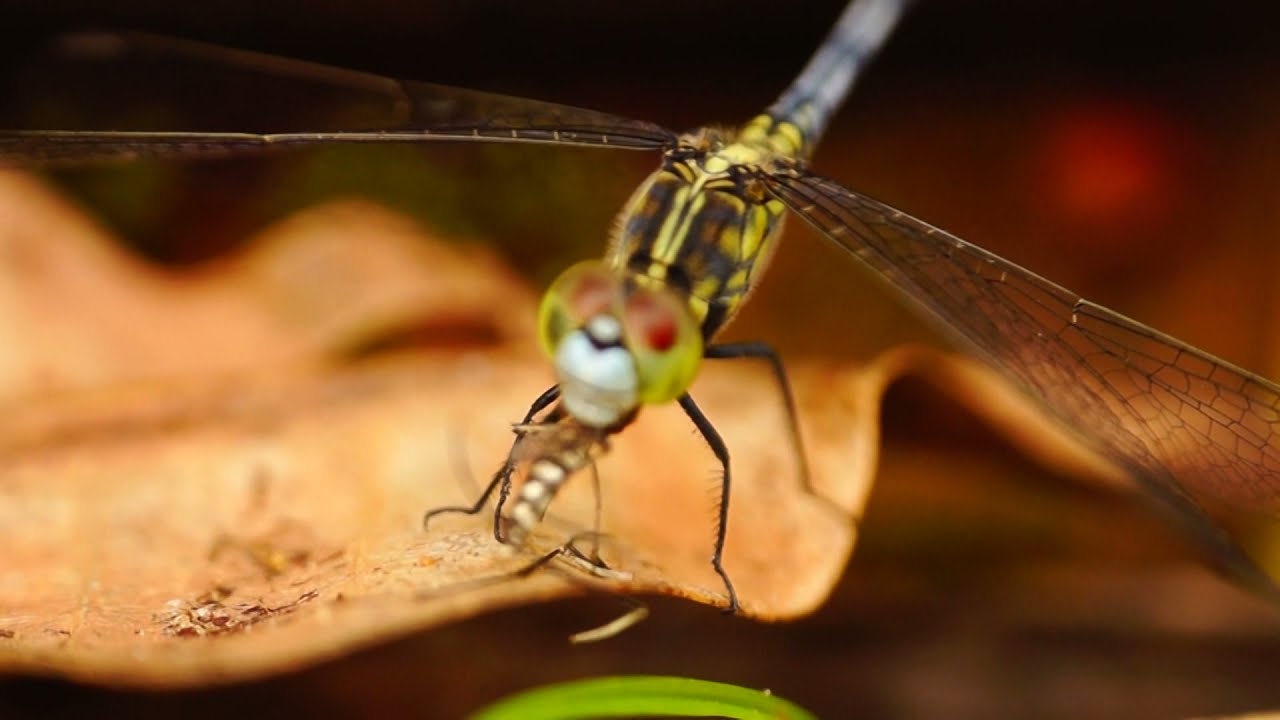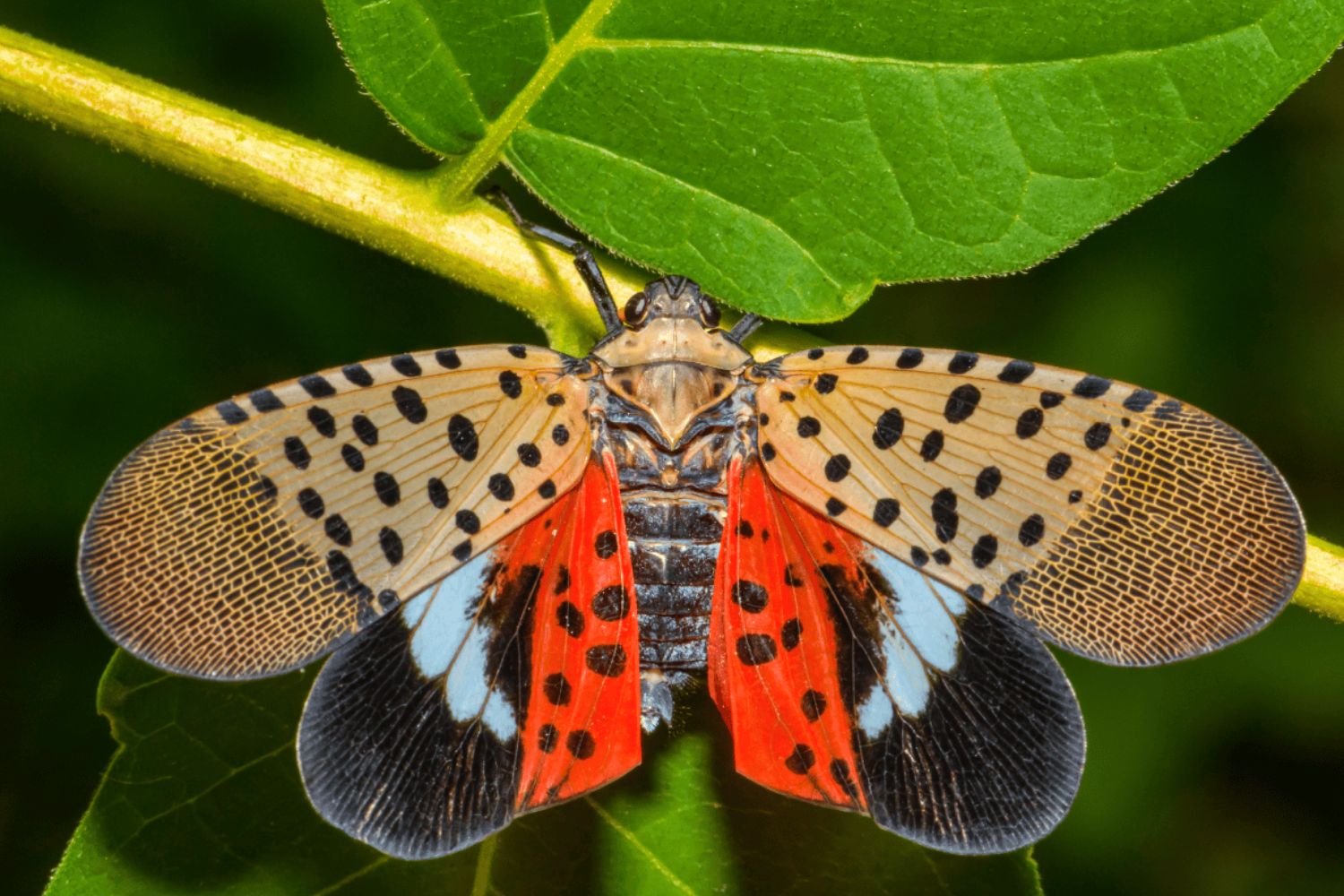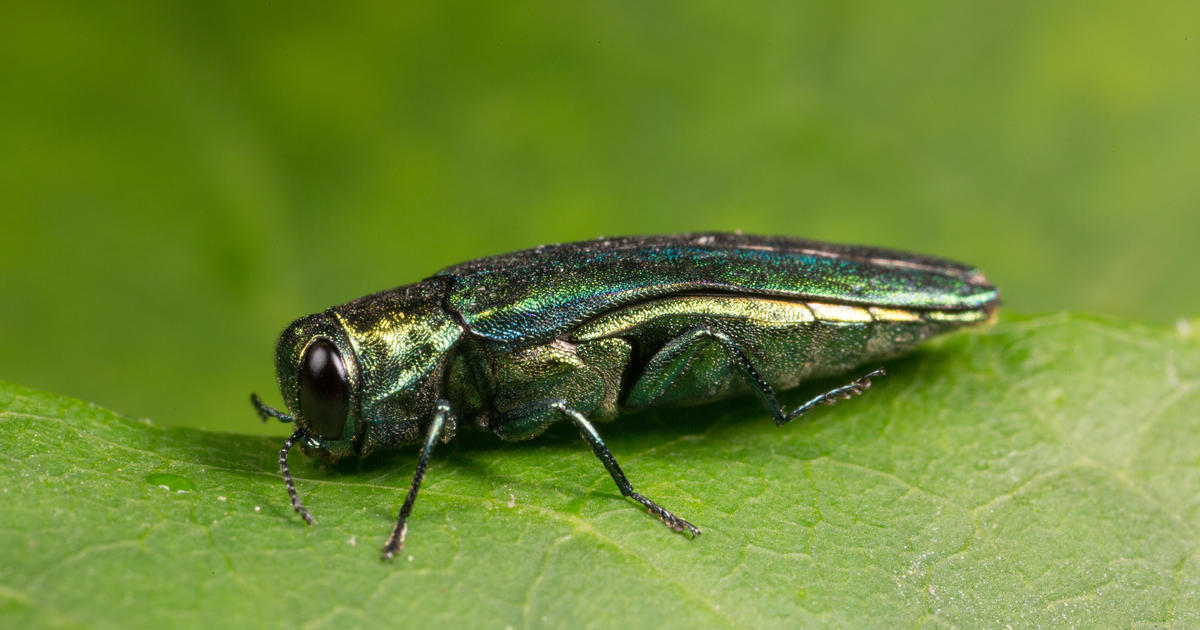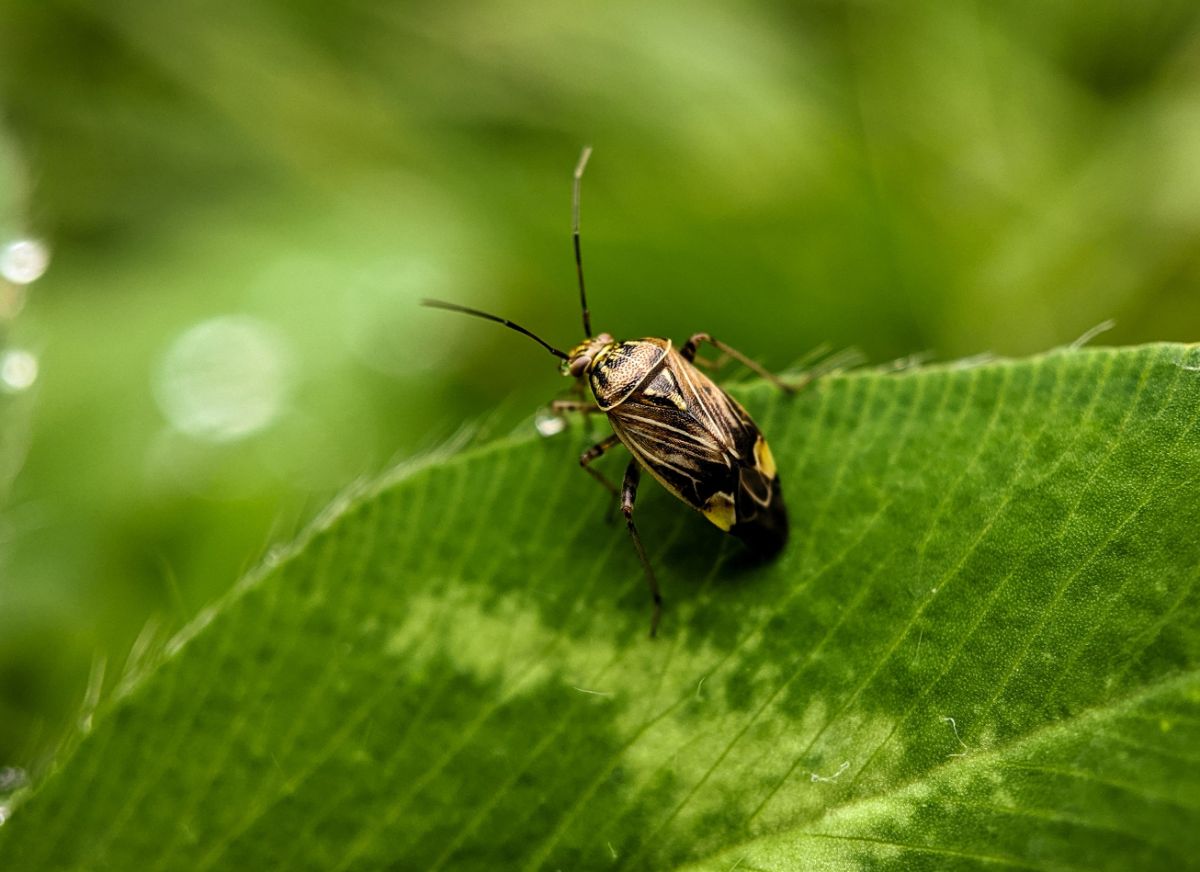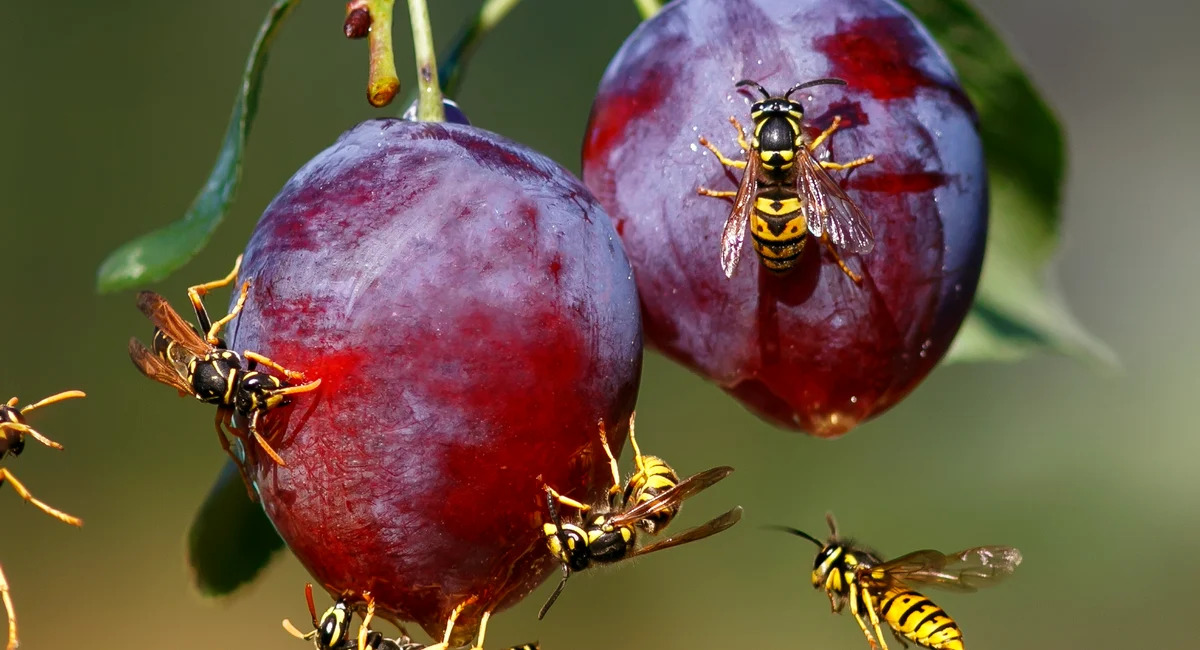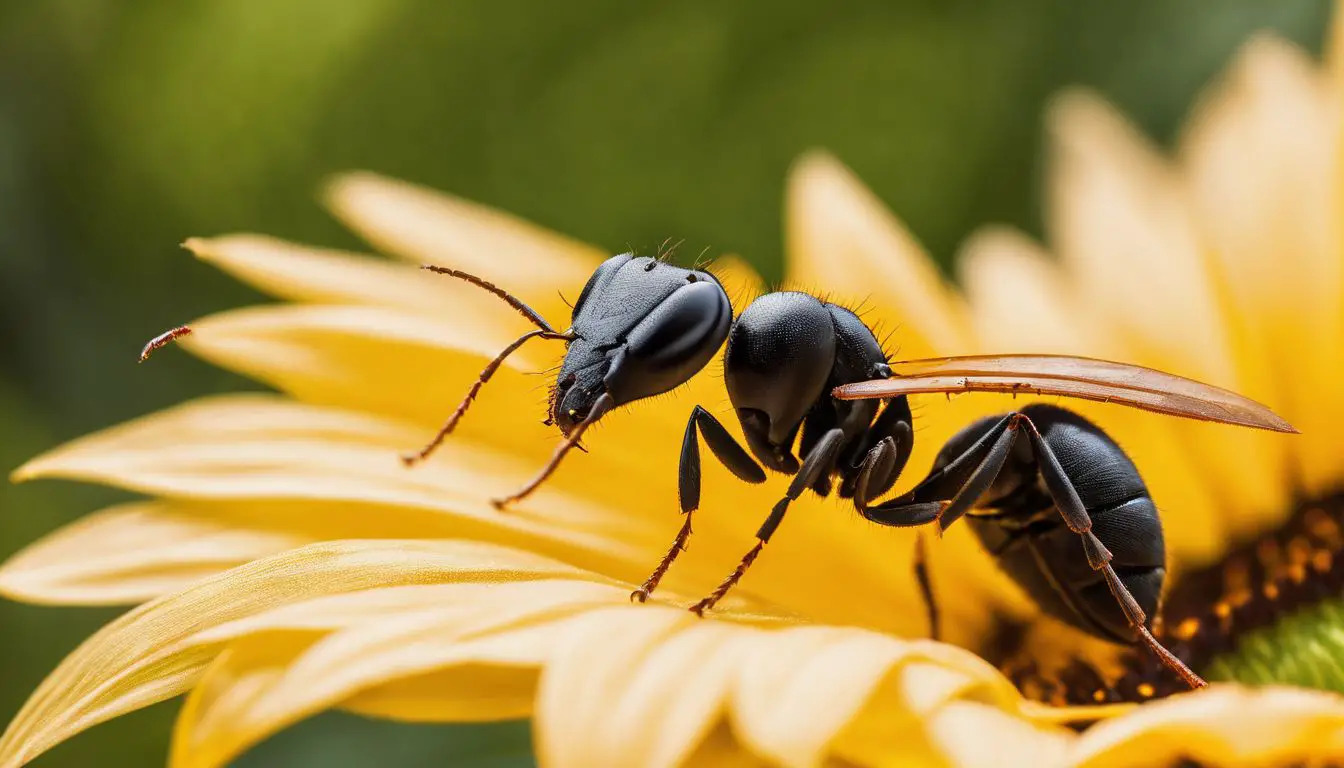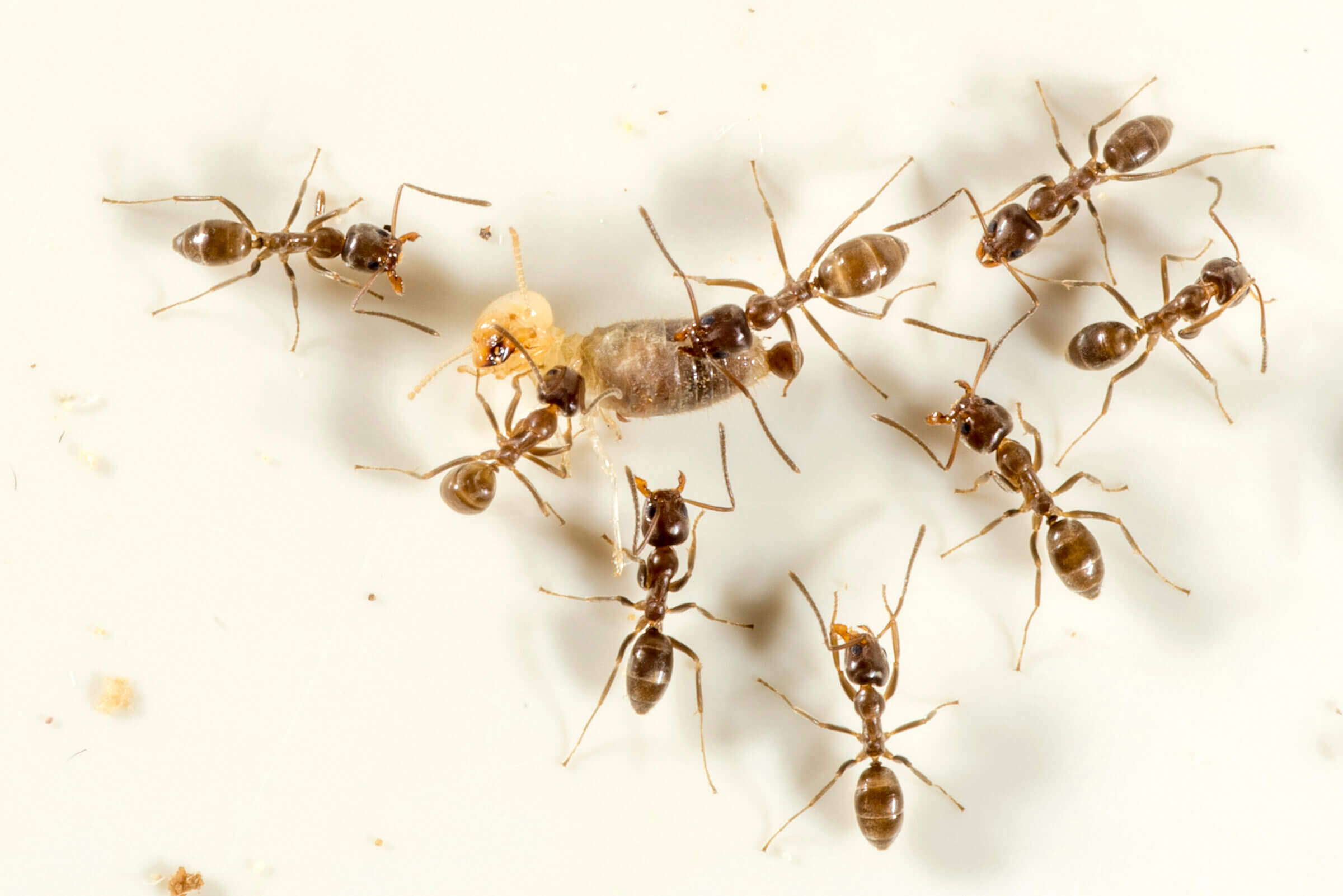Home>Gardening News and Trends>Latest News>What Countries Eat Insects
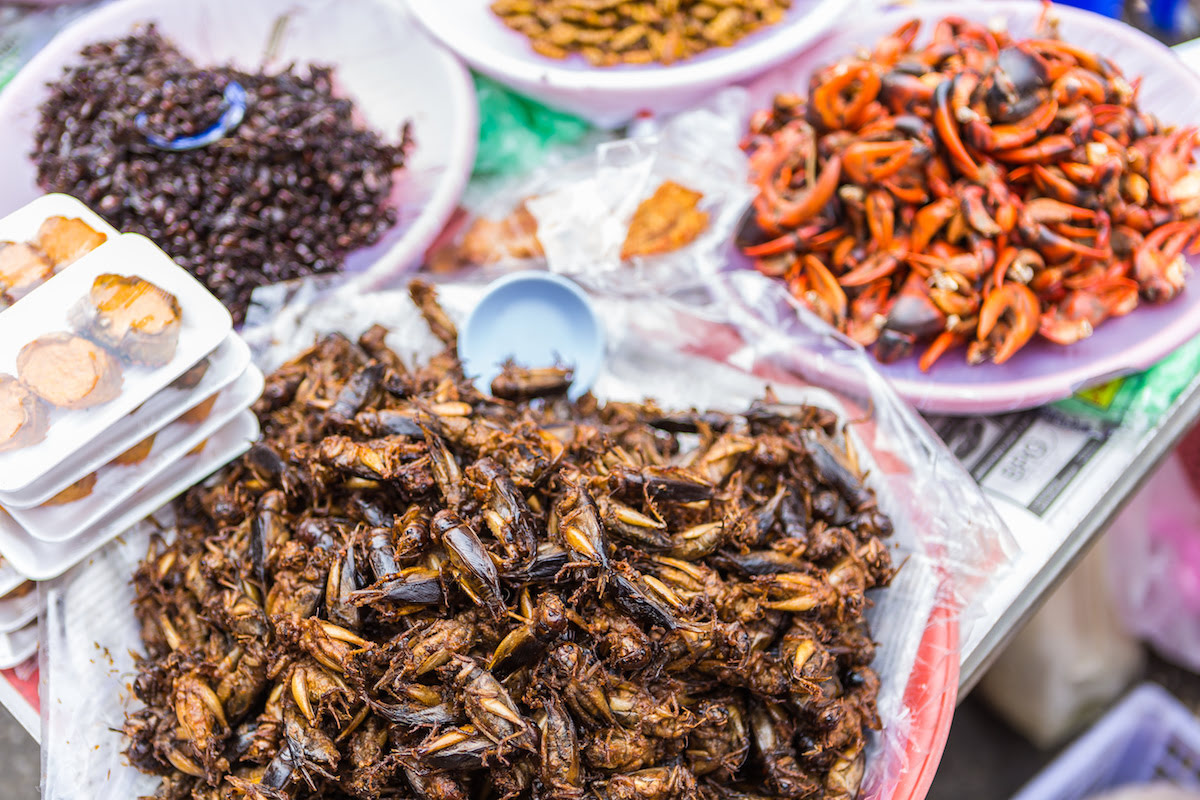

Latest News
What Countries Eat Insects
Modified: January 22, 2024
Discover the latest news on what countries are embracing the trend of eating insects. Explore the diverse culinary cultures and fascinating edible insect recipes.
(Many of the links in this article redirect to a specific reviewed product. Your purchase of these products through affiliate links helps to generate commission for Chicagolandgardening.com, at no extra cost. Learn more)
Table of Contents
Introduction
As the global population continues to grow and resources become more scarce, there is an increasing need to find sustainable food sources. One unconventional but promising solution is turning to insects as a viable and eco-friendly option. In many cultures around the world, insects have been consumed as a rich source of protein for centuries. However, it is only recently that the Western world has started to embrace the idea of incorporating insects into their diets.
The concept of eating insects, or entomophagy, has gained significant attention in the past few years due to its numerous environmental and nutritional benefits. Insects require fewer resources, such as land, water, and feed, compared to traditional livestock like cattle, making them a more sustainable protein source. Additionally, insects are highly nutritious, containing essential amino acids, vitamins, minerals, and healthy fats.
While the idea of eating insects may be perceived as unusual or even repulsive in some cultures, it is important to recognize that insect consumption has a long history and cultural significance in many parts of the world. In fact, over 2 billion people globally already include insects in their regular diets.
This article explores the fascinating world of insect consumption, highlighting the different countries and regions where insect eating is a common practice. From Africa to Asia, Europe to the Americas, we will delve into the diverse culinary traditions and the wide variety of insects that are consumed across the globe.
Join us on this journey as we uncover the cultural significance and sustainable nature of incorporating insects into our diets. Prepare to have your preconceptions challenged and your taste buds tantalized as we explore the fascinating world of edible insects.
Insects as a Sustainable Food Source
When it comes to sustainability, insects have a clear advantage over traditional livestock. The production of beef, for example, requires vast amounts of land, water, and feed, contributing to deforestation, water scarcity, and greenhouse gas emissions. In contrast, raising insects for food requires significantly fewer resources.
Insects are incredibly efficient at converting feed into protein. For example, crickets require six times less feed than cattle to produce the same amount of protein. In addition, insects emit fewer greenhouse gases and generate less waste compared to traditional livestock. This makes them an attractive solution to address the environmental challenges associated with conventional meat production.
Moreover, insects can be farmed using organic waste, such as vegetable scraps or food by-products, reducing the strain on landfills and contributing to the circular economy. Insects also have a short reproductive cycle and high reproductive potential, making them an easily renewable food source.
Their ability to thrive and reproduce in diverse environments further emphasizes their sustainability. Insects can be raised in vertical farms, reducing the need for vast expanses of land, and can even be cultivated indoors using automated systems. This flexibility allows for insect farming to be implemented in urban areas, providing a local and sustainable protein source.
The nutritional value of insects is another crucial factor in their sustainability. They are packed with essential nutrients, including protein, vitamins, minerals, and healthy fats. Insects are particularly rich in amino acids, such as lysine and methionine, which are often deficient in plant-based diets. Incorporating insects into our diets can help address malnutrition and food security issues, especially in communities with limited access to affordable and diverse sources of nutrition.
Overall, insects offer a compelling solution to the environmental and nutritional challenges associated with traditional livestock production. By embracing insects as a sustainable food source, we can reduce our ecological footprint, mitigate climate change, and provide a nutritious and accessible protein source for a growing global population.
Cultural Significance of Insect Consumption
Insect consumption is deeply rooted in the cultural practices and traditions of many societies around the world. For centuries, insects have been seen as a valuable food source and a part of local cuisines, offering unique flavors, textures, and nutritional benefits.
In many indigenous cultures, insects hold a special significance and are considered a delicacy. They are often incorporated into rituals, ceremonies, and festive celebrations. For example, in parts of Africa, termites are harvested during their swarming season and are regarded as a seasonal delicacy, enjoyed by communities as a part of their cultural heritage.
Similarly, in certain Asian countries, such as Thailand and Cambodia, insects have long been consumed as street food snacks, forming an integral part of the local food culture. Vendors sell fried crickets, silkworm larvae, and other insects, enticing locals and tourists alike with their exotic flavors and textures.
Furthermore, insect consumption is not limited to specific regions or communities. In some countries, such as Mexico, the tradition of eating insects dates back for centuries, with insects like grasshoppers, ants, and larvae commonly found in traditional dishes such as chapulines and escamoles.
It is important to recognize that the cultural acceptance of insect consumption varies greatly across different societies. While some cultures embrace the practice, others may view it with hesitation or even disgust due to cultural norms and personal preferences.
However, with the growing awareness of the environmental impact of traditional livestock production, there is a renewed interest in rekindling cultural traditions of insect consumption and exploring the possibilities of incorporating insects into modern culinary practices.
By understanding and appreciating the cultural significance of insect consumption, we can promote respect for diverse food cultures and foster dialogue to bridge gaps in perception and acceptance around the world.
Through education, awareness campaigns, and culinary innovation, we can encourage more individuals to appreciate the cultural importance and ecological benefits of consuming insects, ultimately shaping a more sustainable and inclusive global food system.
Edible Insects in Africa
Africa boasts a rich culinary heritage that includes the consumption of a wide variety of insects. In many African countries, insects are an integral part of the traditional diet, providing a vital source of protein and essential nutrients.
One of the most popular and widely consumed insects in Africa is the edible caterpillar. These caterpillars, often harvested from trees or shrubs, are abundant in protein and minerals and are a seasonal delicacy in countries like Botswana, Zimbabwe, and Zambia. They are typically dried or smoked and can be added to stews, curries, or enjoyed as a crispy snack.
Termites are also highly regarded as a nutritious insect food source in Africa. They are collected during the rainy season when they form large colonies and are consumed roasted, fried, or added to soups and sauces. Termites are not only tasty but are also rich in protein, fat, and minerals, making them a valuable dietary supplement in many African communities.
Other insects commonly consumed in Africa include grasshoppers, crickets, and palm weevil larvae. Grasshoppers, known as “Nsenene” in Uganda, are harvested during their swarming season and are often cooked with onions, tomatoes, and spices or enjoyed fried as a crunchy snack.
In addition to their nutritional value, these edible insects hold cultural significance in African societies. They are celebrated during harvest festivals, weddings, and other festive occasions, where they are shared among family and friends as a symbol of abundance and prosperity.
However, despite the long-standing tradition of insect consumption in Africa, there are challenges to fully embracing the potential of edible insects. The perception of insects as a “poor man’s food” and the influence of Western dietary norms have led to a decline in insect consumption in some urban areas.
Nevertheless, efforts are being made to promote the nutritional and environmental benefits of edible insects in Africa. Non-governmental organizations, research institutions, and local communities are working together to raise awareness, develop sustainable harvesting practices, and create innovative food products that incorporate insects.
By recognizing and revitalizing the cultural and nutritional value of edible insects, Africa can harness the potential of these natural resources to address food security, malnutrition, and environmental sustainability, while preserving cultural heritage and promoting culinary diversity.
Edible Insects in Asia
Asia has a long history of incorporating insects into its culinary traditions, with a wide variety of edible insects consumed across the continent. These insects have not only provided a source of nutrition but have also become an integral part of the cultural fabric of many Asian countries.
One of the most famous examples of edible insects in Asia is the consumption of insects in Thailand. In Thai cuisine, insects such as crickets, silkworm larvae, and grasshoppers are often prepared as deep-fried snacks, packed with flavor and crunch. Locals and tourists alike can be seen indulging in these insect delicacies on the bustling streets of Bangkok.
In Japan, the practice of consuming insects extends to the enjoyment of bee larvae and the larvae of the udon noodle fly. These larvae are often added to dishes like miso soup or incorporated into traditional sweets, offering unique textures and flavors.
China also has a long history of insect consumption, with a wide variety of insects featured in their culinary repertoire. Popular choices include fried scorpions, crispy fried ants, and the famous “century eggs,” which are preserved using a mixture of clay, ash, and rice husks.
Similarly, in many Southeast Asian countries, such as Laos and Cambodia, insects like tarantulas and water beetles are not just a delicacy but also a part of the cultural identity. These insects are fried or grilled and often consumed as street food, offering a unique taste experience for adventurous eaters.
It is important to note that in many Asian countries, the consumption of insects extends beyond just snacks or street food. Insects are included in traditional dishes, soups, and stir-fries, enhancing the flavors and nutritional profiles of these meals.
While insect consumption is deeply ingrained in the culinary traditions of Asia, there are ongoing efforts to promote research, innovation, and sustainable practices. Organizations and individuals are exploring ways to increase the availability and accessibility of edible insects, while also addressing concerns such as quality control, safety regulations, and environmental sustainability.
By embracing and celebrating the rich cultural heritage of edible insects in Asia, while also promoting sustainable practices, these countries can contribute to a more diverse and resilient food system that respects traditional knowledge and fosters environmental stewardship.
Edible Insects in Europe
In recent years, there has been a growing interest in edible insects in Europe as people recognize their potential as a sustainable and nutritious food source. While edible insects have not been traditionally part of European diets, there is a growing movement to explore their culinary and environmental benefits.
Several European countries have started embracing the idea of consuming insects. In the Netherlands, for example, insect farms have been established to produce a variety of insects for human consumption. These insects, including mealworms and crickets, are often used in innovative food products such as protein bars, snacks, and even burgers.
Insects are also gaining traction in other parts of Europe. In Belgium, for instance, supermarkets have started selling insect-based products, and insect-focused restaurants have popped up in major cities. Insects like mealworms, grasshoppers, and crickets are being used in various dishes and snacks, providing a new and exciting gastronomic experience for Europeans.
European Union regulations have played a crucial role in promoting the safe consumption of edible insects. The EU established specific guidelines for the production, processing, and marketing of insects for human consumption, ensuring that insects sold as food meet certain safety and quality standards. These regulations have helped build consumer confidence in the safety and sustainability of edible insects.
Moreover, the culinary world in Europe has embraced the concept of “entomophagy,” where insects are used as ingredients in gourmet dishes. Renowned chefs and culinary innovators are exploring the unique flavors, textures, and nutritional potential of insects, pushing the boundaries of traditional European cuisine.
However, challenges still remain in terms of mainstream acceptance and awareness. Many Europeans may still perceive insects as unconventional or unappetizing, facing cultural barriers and hesitations when it comes to incorporating them into their diets.
Nevertheless, the growing interest and openness to edible insects in Europe indicate a shift in attitudes towards more sustainable and eco-friendly food options. With continued promotion, education, and innovative culinary creations, it is likely that edible insects will become more accepted and integrated into European diets, contributing to a more sustainable food system in the region.
By embracing the potential of edible insects in Europe, we can diversify our food choices, reduce our environmental impact, and create a more resilient and sustainable food future.
Edible Insects in North America
Edible insects have gained increased attention and interest in North America in recent years, as more people recognize their nutritional and environmental benefits. While insect consumption is not as deeply rooted in North American culinary traditions compared to other regions, there has been a growing movement to explore the potential of incorporating insects into the Western diet.
In the United States and Canada, edible insects are being incorporated into innovative food products. Companies are producing snacks, protein bars, and even cricket flour, all of which utilize insects as a sustainable source of protein. These products are gaining popularity as people seek out alternative, environmentally friendly protein sources.
Furthermore, edible insects are being embraced in the culinary scene in North America. Forward-thinking chefs and restaurants are incorporating insects into their menus, introducing diners to new and exciting flavors. Insects like crickets, mealworms, and grasshoppers are being used in dishes such as tacos, stir-fries, and even desserts, providing a unique gastronomic experience.
The awareness and acceptance of edible insects have also been fueled by various events and festivals dedicated to showcasing insects as a food source. These events provide a platform to educate the public about the nutritional benefits of insects, their environmental sustainability, and their potential to address food security challenges.
Despite the growing interest, there are still cultural and regulatory hurdles to overcome in North America. In some Western societies, the idea of consuming insects is still met with hesitation due to cultural perceptions and personal aversions. There is a need for continued education and awareness to dispel misconceptions and highlight the ecological advantages of including insects in our diets.
Additionally, regulations surrounding the production and sale of edible insects vary across different states and provinces, creating challenges for businesses in the industry. Harmonizing these regulations and promoting consistent standards can help facilitate the growth of the edible insect market in North America.
Nevertheless, the increasing interest and exploration of edible insects in North America indicate a shift toward more sustainable and diverse food choices. With continued efforts to promote insect consumption, address cultural barriers, and streamline regulations, edible insects have the potential to play a significant role in the future of the North American food system, offering a sustainable and nutritious alternative for a growing population.
Edible Insects in South America
In South America, the consumption of edible insects has a long-standing tradition, deeply rooted in the cultural practices and culinary heritage of many indigenous communities. Edible insects offer a sustainable source of nutrition and are recognized for their ecological benefits in this region.
A notable example of edible insects in South America is the consumption of ants. In countries like Colombia and Brazil, ant species such as “hormigas culonas” and “saúva ants” are harvested and enjoyed as a delicacy. These ants are typically roasted and added to dishes or incorporated into traditional beverages, imparting a unique tangy flavor.
In the Amazon rainforest, various insects have been consumed by indigenous communities for centuries. Grubs, caterpillars, and beetle larvae are collected and prepared in diverse ways, including roasting, boiling, or sautéing. These insects serve as a vital protein source in remote areas where alternative food options may be limited.
Another popular insect in South America is the “chapulín,” a type of grasshopper commonly consumed in Mexico and parts of Central America. Chapulines are dried, seasoned, and often enjoyed as a snack or added to traditional dishes like tacos or quesadillas.
In addition to traditional consumption, efforts are being made to introduce edible insects into mainstream South American cuisine. Restaurants and food companies are incorporating insects into their menus and products, promoting their nutritional value and sustainability. These culinary innovations not only provide new and exciting dining experiences but also contribute to the preservation of cultural heritage.
South America’s rich biodiversity also offers a diverse array of edible insects. From palm weevil larvae in the Amazon to honey pot ants in arid regions, there are numerous unique and flavorful insects that add to the gastronomy of the continent.
It is worth noting that South America faces similar challenges to other regions when it comes to the acceptance and commercialization of edible insects. Cultural biases and misconceptions often hinder the widespread adoption of insect consumption in urban areas. Addressing these perceptions through education, culinary innovation, and raising awareness about the environmental benefits can help overcome these barriers.
By embracing the cultural significance and nutritional value of edible insects in South America, we can promote sustainable food practices, preserve traditional knowledge, and ensure food security for generations to come.
Conclusion
The world of edible insects is a fascinating realm that combines cultural significance, nutritional value, and environmental sustainability. From Africa to Asia, Europe to the Americas, the consumption of insects has been embraced by various cultures for centuries.
Insects offer a sustainable food source that requires fewer resources and produces fewer greenhouse gas emissions compared to traditional livestock. They are packed with essential nutrients, making them a viable solution to address malnutrition and food security issues globally.
Throughout this article, we explored the culinary traditions and practices of different regions, highlighting the wide variety of edible insects consumed around the world. From the caterpillars of Africa to the insects incorporated into street food in Asia, insects have become an integral part of local cuisines, adding unique flavors and cultural significance to dishes.
While there are cultural and perception barriers to overcome, the growing interest in edible insects signifies a shift towards more sustainable and diverse food choices. Efforts are being made to promote insect consumption, develop regulations, and create innovative insect-based products that cater to the discerning tastes of consumers.
By embracing the cultural heritage, nutritional value, and ecological benefits of edible insects, we can foster a more sustainable and resilient global food system. From rural communities to urban centers, there is a growing recognition of the potential of edible insects to address pressing food security and environmental challenges.
As we move forward, it is crucial to continue raising awareness, conducting research, and promoting insect consumption as a viable and nutritious food choice. The acceptance and adoption of edible insects will contribute to a more sustainable future, ensuring the well-being of our planet and future generations.

